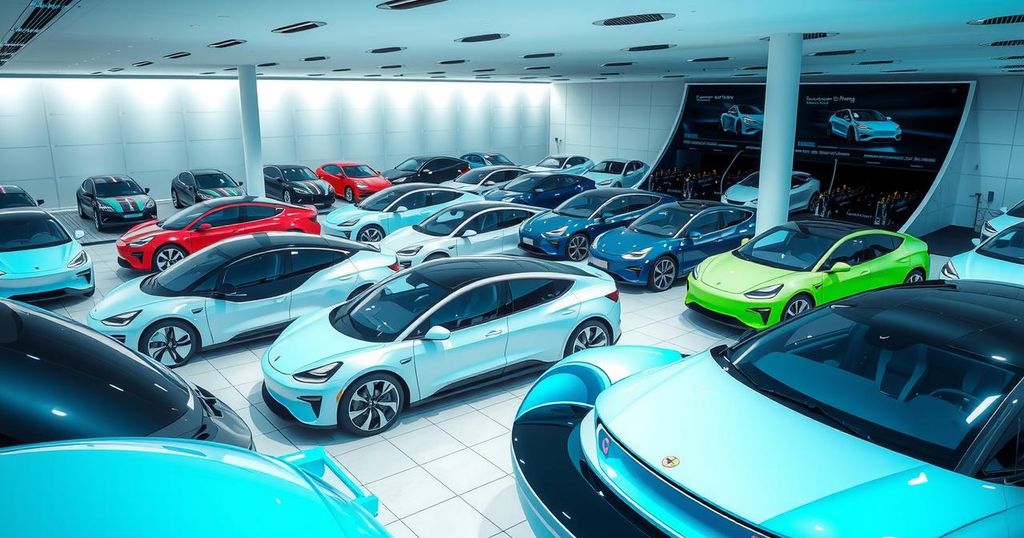Chinese Automakers Target Malaysia for Tariff-Friendly Opportunities
Chinese automakers are increasingly looking to Malaysia and Southeast Asia as tariff-friendly regions to counter high U.S. and European tariffs. This shift could lead to more affordable electric vehicles for consumers and intensify competition in the Malaysian market, where brands like BYD and Chery are already gaining significant shares. The dynamics of trade relations and regional manufacturing strategies further underline the complexities faced by the automotive sector in this evolving landscape.
Chinese automobile manufacturers are increasingly turning their attention to Southeast Asia, particularly Malaysia, as they seek regions with favorable tariff conditions. This strategic pivot arises from the high tariffs imposed in markets such as the United States and Europe, potentially resulting in greater imports of Chinese vehicles and parts at competitive prices. Consequently, this situation could offer consumers access to more affordable options and advanced electric vehicle (EV) technology, while heightening competition among both domestic and international brands operating in Malaysia.
Companies like BYD and Chery have already begun to pose significant challenges to established Japanese, South Korean, and European brands within the Malaysian market. Although Malaysia is not significantly impacted by U.S. tariffs, the sector may face indirect consequences stemming from factors such as increased operational costs and currency fluctuations.
The shift towards Southeast Asia by Chinese automakers aligns with a broader pattern of industrial migration that spans various sectors, including electronics and textiles. Notably, SAIC Motor initiated a $310 million factory near Bangkok in 2018, establishing a key production site for Chinese automotive manufacturing in Thailand. This early investment has yielded substantial market success, with MG surpassing established competitors like Suzuki in just nine months of operation. Similarly, manufacturers such as BYD and Chery have rapidly expanded their presence in Malaysia, with Chery achieving the status of the third best-selling non-national brand within 18 months.
The establishment of the BAIC-Amber Dual joint venture in Malaysia further exemplifies this ongoing trend, as they plan to produce between 2,000 to 3,000 EVs in their initial year at the Gurun facility. This manufacturing shift mirrors the strategies employed by Japanese automakers during the 1980s and 1990s, aimed at circumventing U.S. trade barriers by creating regional production hubs to maintain market access while mitigating tariff exposure.
Both Thailand and Malaysia are vying to become major electric vehicle production centers within a regional market consisting of 550 million potential consumers. These nations face the challenge of attracting Chinese manufacturing investments while simultaneously safeguarding their domestic automakers from potential market saturation due to these imports. Malaysia’s Perodua, for example, maintains a competitive edge through affordable pricing and a high local content ratio, which provides a buffer against currency volatility and variations in import costs.
As of the first quarter of 2024, Chinese electric vehicle manufacturers command a substantial 75% share of the Southeast Asian EV market. The competition is growing so rapidly that non-national automakers in Malaysia have experienced a 2.3% decline in sales, despite an overall market growth of 20.6%, with Chinese brands capturing significant portions of this expansion. Indonesia has recently announced an electric vehicle purchase subsidy of $5,000, showcasing how Southeast Asian countries are employing policy measures to shape and benefit from this evolving market landscape.
The ongoing trade tensions between the United States and China create both opportunities and vulnerabilities for Southeast Asia. As companies aim to diversify their supply chains away from China due to tariff challenges, countries in Southeast Asia are positioning themselves as alternative manufacturing destinations. Trade flows between China and Southeast Asia have surged dramatically from $40 billion in 2000 to a projected $1 trillion by 2020, establishing substantial economic interconnections.
Nevertheless, experts caution that potential surges in redirected Chinese products from U.S. markets could strain Southeast Asian economies, particularly in sectors vulnerable to tariffs. Notably, Xi Jinping’s recent diplomatic engagements in Vietnam, Malaysia, and Cambodia signify China’s strategic emphasis on the region amid these ongoing tensions, exemplified by an $8.3 billion railway investment in Vietnam. The automotive sector serves as a telling illustration of these implications, with Chinese EV manufacturers such as BYD, NIO, and XPeng expanding their footprint in Southeast Asia as they contend with barriers in the U.S. market. ASEAN nations are fostering intra-regional cooperation to navigate these complex trade dynamics, seeking to capitalize on manufacturing opportunities while minimizing economic disruptions.
In conclusion, Chinese automakers are strategically shifting focus to Malaysia and Southeast Asia as tariff-friendly regions, driven by high tariffs in Western markets. This transition not only opens the door for more affordable vehicles and advanced EV technology for consumers but also intensifies competition among both local and international brands. The rapid rise of Chinese brands in Malaysia highlights a broader trend of industrial migration, and the response from Southeast Asian nations indicates a careful balance between attracting foreign investment and protecting domestic industries amidst evolving trade dynamics.
Original Source: www.techinasia.com




Post Comment